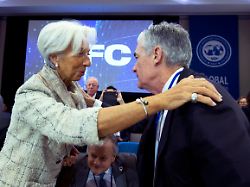Financial institutions have problems
Are the central banks stepping on the interest rate brake?
By Stefan Schaaf
03/16/2023 10:42 am
The bankruptcy of the Silicon Valley Bank presents the central banks with a new problem. They could be forced to raise rates more slowly than previously planned.
The crisis surrounding the insolvent Silicon Valley Bank could herald the end of the current rate hike cycle. “I think people are associating Silicon Valley Bank’s problems with the rate hikes that have already taken place,” ING economist Rob Carnell told Reuters.
This assessment is also reflected in the futures markets: while last week the market for interest rate futures was still confident that the US key interest rate would rise by 50 basis points to a range of 5.0 to 5.25 percent, it now only expects a rate hike by 25 basis points – and even that only with an 80 percent probability. The fact that the Fed does nothing at all is now priced in with a probability of 20 percent.
“If the SVB issue is under control now and inflation doesn’t unexpectedly fall this week, the Fed could hike rates by 50 basis points at its March 21-22 meeting,” said Stephen Dover, head of the Franklin Templeton Institute . “However, if the situation remains volatile and uncertain, the Fed will find themselves in a bind and may be forced to hike rates more slowly (25 basis points) or even forego a hike at the upcoming meeting.”
The expectations for the maximum interest rate in the current rate hike cycle (terminal rate) have also fallen significantly. Last Wednesday, this value was still 5.7 percent. Earlier this week, it fell to 5.1 percent, which is roughly the 80 percent probability of a 25 basis point rate hike. This increase could happen this month or even in the coming months.
Interest rates rise, less liquidity
Among the banks not expecting the Federal Reserve to raise interest rates at all on March 22 is Goldman Sachs. It downgraded its expectation of a 25 basis point hike over the weekend and now expects interest rates to remain unchanged. At the same time, the bank’s economists warned of “considerable uncertainty about the way to March” with regard to further interest rate hikes.
These expectations are reflected in a significant drop in yields on short-dated US Treasuries. The yield on two-year US Treasury bonds, typically a good indicator of interest rate expectations, has fallen significantly since last Wednesday. Yields on the two-year federal bond, which is trend-setting for the euro zone, have also fallen noticeably.
The European Central Bank (ECB) will already decide on its key interest rates this Thursday. Here, a rate hike of 50 basis points to 3 percent for the deposit rate was considered safe. Since the weekend there has been a big question mark behind this expectation, because the ECB no longer just has to keep an eye on inflation, but also on financial stability. This is because rising interest rates deprive the financial system of liquidity, making it more vulnerable to crisis situations.
